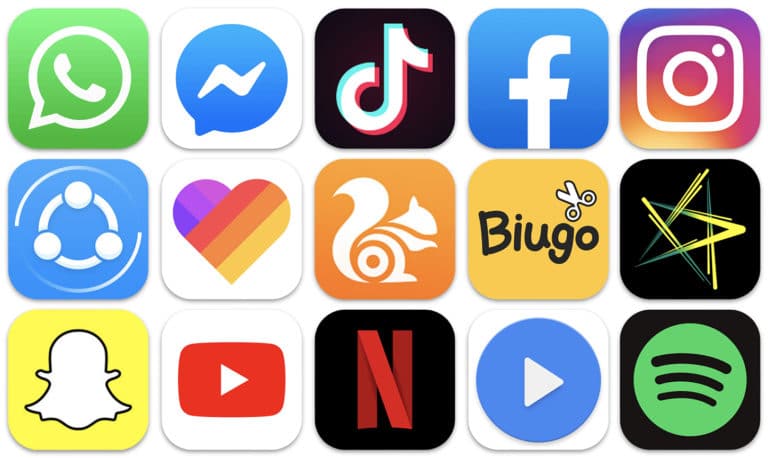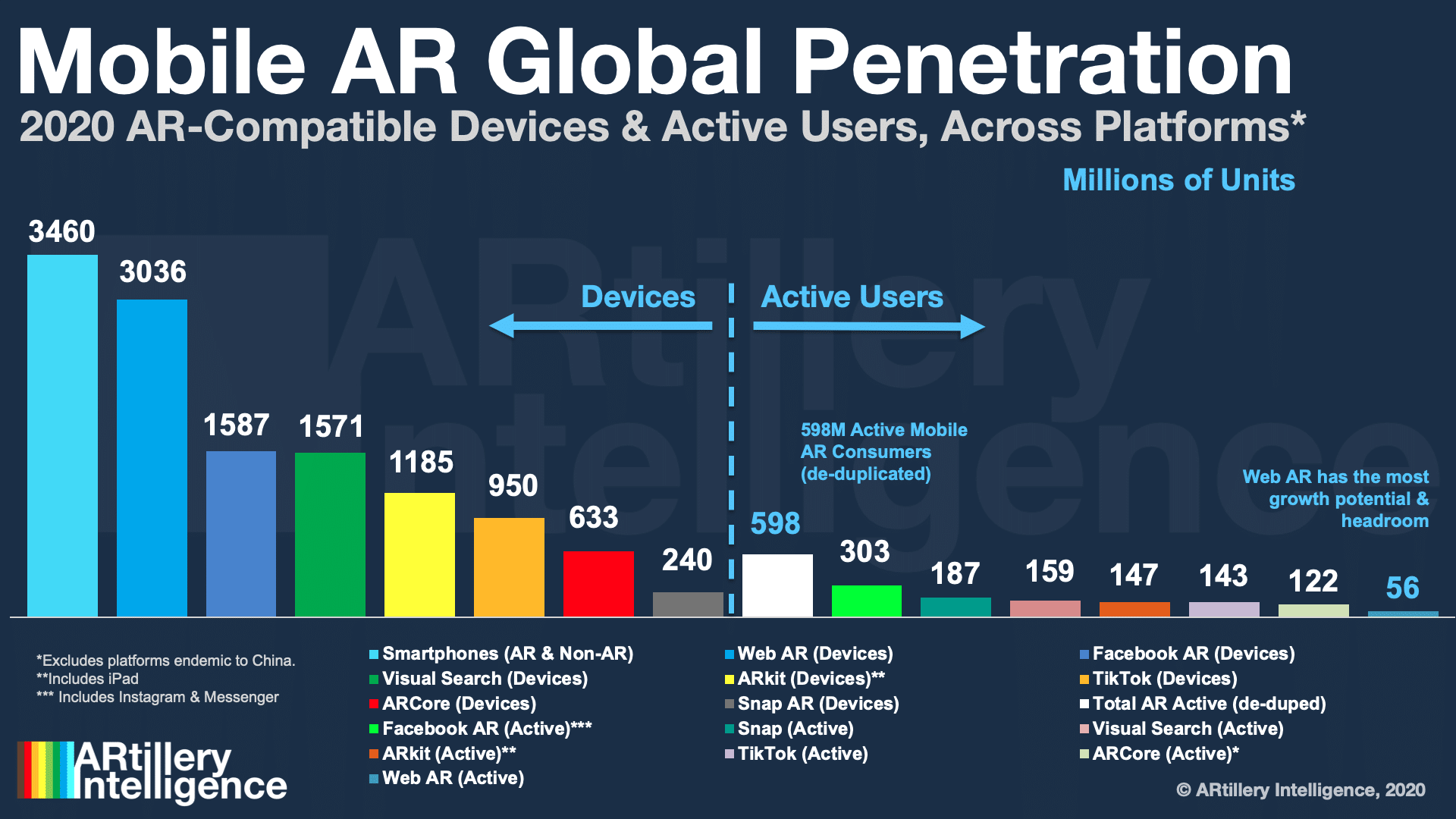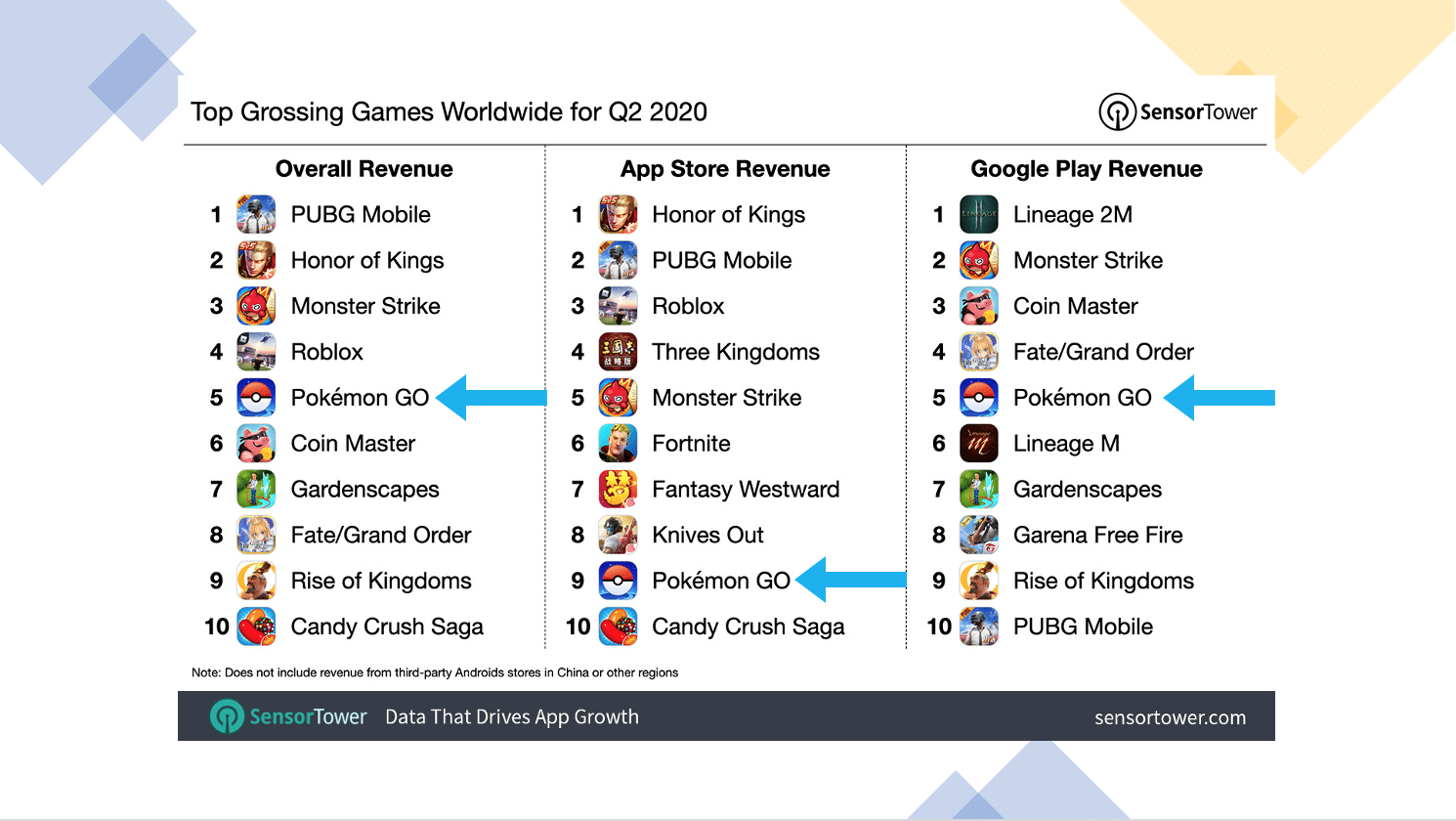
 Data Dive is AR Insider’s weekly dive into select spatial computing figures. Running Mondays, it includes data points and strategic takeaways. For an indexed library of data, reports, and multimedia, subscribe to ARtillery Pro.
Data Dive is AR Insider’s weekly dive into select spatial computing figures. Running Mondays, it includes data points and strategic takeaways. For an indexed library of data, reports, and multimedia, subscribe to ARtillery Pro.
It’s no secret that mobile AR is where the scale is today, given 3 billion global smartphones. As for the portion that’s AR-compatible, the common industry rally cry is that there are 1 billion+ AR-enabled smartphones. That figure applies to ARkit and ARCore-compatible smartphones.
But if you pan back to all platforms, such as Snapchat’s Lens Studio and Facebook’s Spark AR, the AR-ready universe is a lot larger (figures below). But the number that matters most is active users across these platforms, which we project to hit 598 million (de-duped) by the end of 2020.

Engagement Driver
Supporting AR’s penetration is new data from Sensor Tower that show top mobile app downloads in July. What struck us is that four of the top five apps feature AR to varying degrees. This list doesn’t speak to AR active use, but it’s a good proxy for AR penetration and exposure.
If we pan back to the top-ten apps, five of them feature AR. And zeroing in on just iOS, the portion is even greater at seven of the top ten (see below). Android meanwhile has five of the platform’s top ten apps that feature AR. These apps all apply AR in different ways and degrees.
For example, Facebook and Instagram have leaned into AR lenses as an engagement driver that enhances already-popular media sharing (and monetization). The same goes — though to a lesser degree — to TikTok, which has massive global scale but geopolitical uncertainty.
One contentious selection on the list may be Zoom. Though it’s known for things other than AR, Zoom’s virtual backgrounds check most boxes for AR designation. That depends on how strict your definition of AR is: We tend to apply it broadly to any meaningful augmentation of reality.

Business Case
Speaking of broadening AR’s definitions, another contentious app in that respect is Pokémon Go (for the record, we stand on the side of its AR designation). Beyond that, and In the spirit of the above exercise, we dug further into Sensor Tower’s data to find that it’s likewise performing well.
Specifically, Pokemon Go is ranked fifth among top-grossing games worldwide for Q2 2020. This is a good confidence signal for AR, not just in consumer engagement and traction, but revenue. Along with Snapchat, Niantic has validated that there’s a real business case for AR.

In all cases above, these are good examples of AR as a Feature. This is the AR positioning that’s having the most traction today according to our survey research with Thrive Analytics. This stands to reason as it lets AR piggyback on popular apps rather than forcing an app download.
We see this principle validated in the fact that the most popular form of AR so far — Snapchat lenses — are AR-as-a-Feature. This once again invokes training “training wheels” construct to acclimate users. AR is too early and unproven to get users to go out of their way or work for it.
But despite growing pains and a challenging path to gain mainstream consumer traction, we’re still seeing bright spots like sponsored lens ad revenue and enterprise adoption. Now we can add to that list the fact that AR is delivered alongside 70 percent of the top mobile apps.
